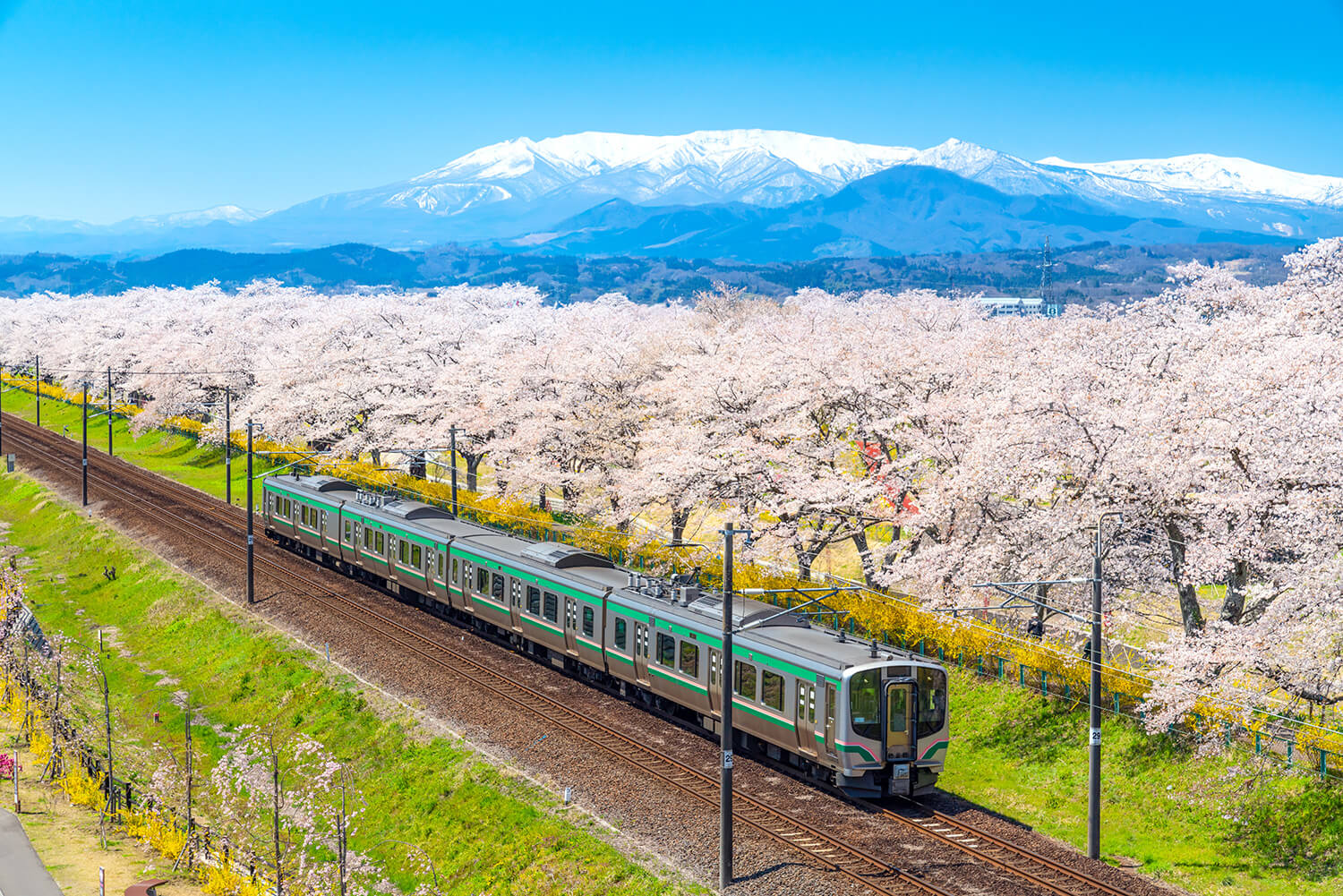
May 2020
Weary of the crowds and looking for somewhere off the beaten track to explore?
Why not escape from the packed streets of the main cities and discover a region overflowing with stunning natural landscapes, samurai history, festivals, delicious food, and warm-hearted locals!
Spreading out just above Tokyo, the Tohoku region features six prefectures all with their own experiences to explore!
I fell in love with the Tohoku region when I had the amazing opportunity to live there for two years. The more I explored the region, the more I felt like I’d found my second home! I wanted to share my favourite places in Tohoku, so without further ado, let's jump into my top ten places to visit in the deep North of Japan!
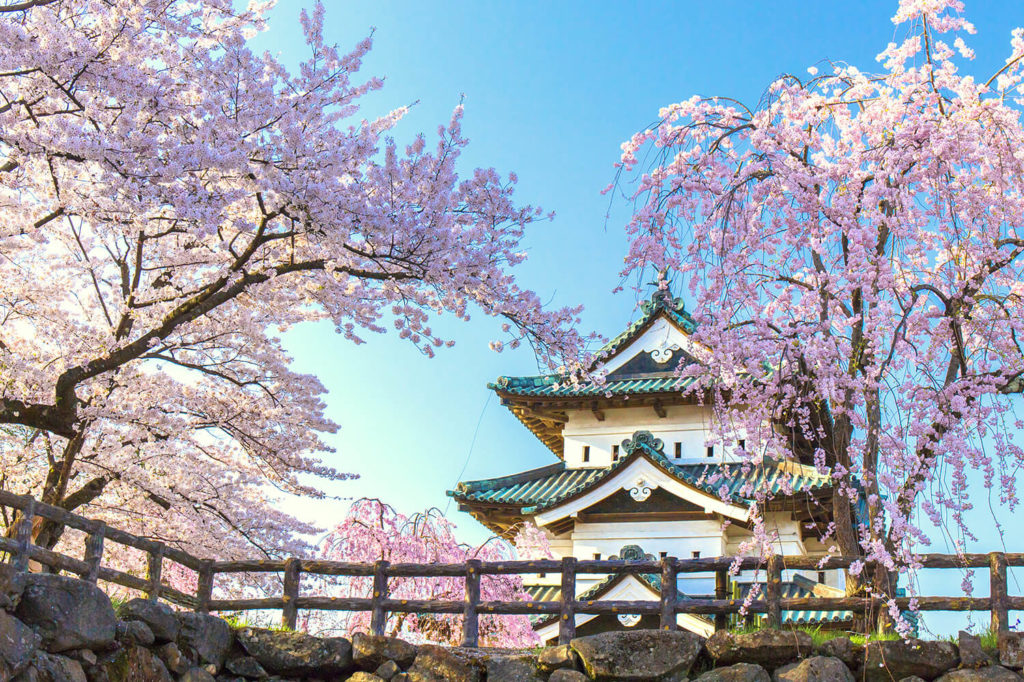
One of Japan’s best spots for Cherry Blossom viewing, Hirosaki Castle is the ideal getaway for a spring holiday in Japan. Although the original castle burned down, it was rebuilt in 1810 making it one of the few castles in Japan rebuilt in the Edo Period and the only one in Tohoku.
The three-story keep of Hirosaki Castle is surrounded by Hirosaki Park, which holds over 2500 cherry trees. This is the main draw of the area as the park is spectacular when the cherry blossoms are blooming, around late April. The paths here turn into tunnels of perfectly pink blossoms and at the end of the full-bloom period, the moat around the castle becomes a carpet of petals. There are boats to float around the moat if you’d like to sit, relax, and enjoy the ambiance.
From April 23 to May 5th each year, the city holds the Cherry Blossom Festival. During this festival, the castle grounds are open at night to enjoy the illuminated cherry blossoms. It’s the perfect place for a nightly stroll and if you feel peckish there are food stalls around the park as well!
A short walk from the park, mosey on through the preserved samurai residences in Hirosaki’s samurai district. The Ito, Umeda, and Iwata residences all belonged to samurai families during the Edo Period, while the Ishiba residence were members of the merchant class. The Ishiba residence is still in active use as a brewery and a home.
Using your JR East Tohoku Area Pass, take the Hayabusa Bullet Train from Tokyo Station to Aomori Station. Change at Aomori Station for the JR Ou Line for Odate/Hirosaki to Hirosaki Station.
From Hirosaki Station, take the Dotemachi Loop Bus and get off at Shiyakusho-mae bus stop which is the closest to Hirosaki Castle.
Best time of year to visit?
Spring!
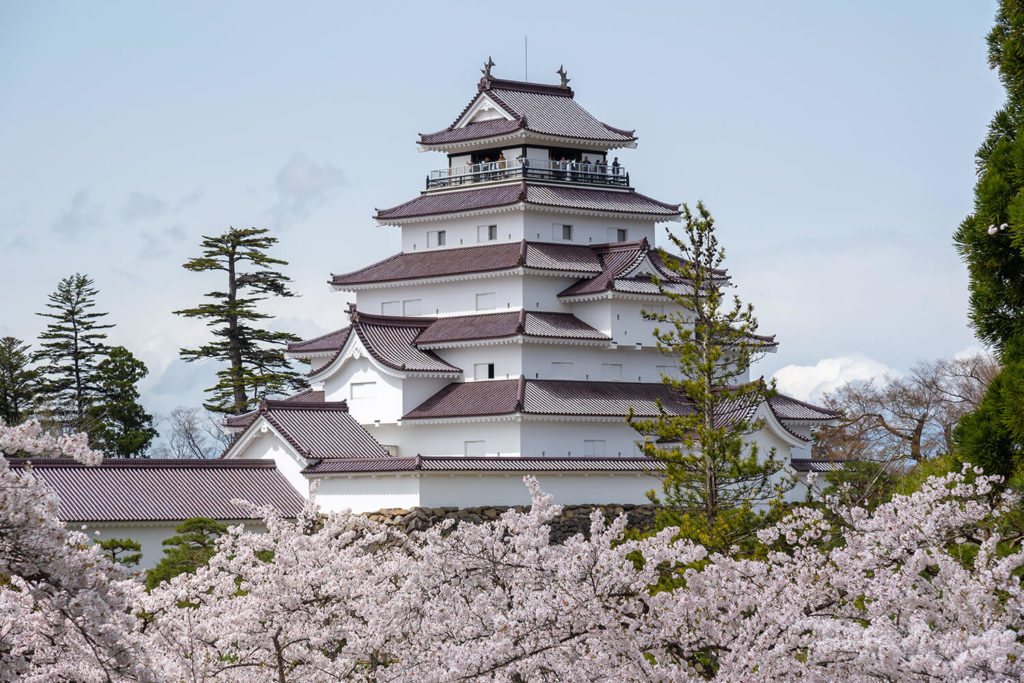
Easily accessed through use of the JR East Tohoku Area Pass, Aizu Wakamatsu is a very old town that was once a battleground in the Boshin War. Nowadays, it’s a great place to visit to see the beautiful Tsuruga Castle, try some fantastic Sake and learn about the Samurai history of the area.
Tsuruga Castle was built in 1384 and has been rebuilt after the castle was destroyed after the Boshin war of 1868. Featuring a unique red roof, the castle also showcases an exhibit to the history of the Tsuruga Castle and the samurai life of the time. The castle is surrounded by the Tsuruga Castle Park and if you’re feeling like a nice cup of green tea, the Rinkaku Teahouse is in the Park grounds.
If tea isn’t your cup of, well, tea, then why not try tasting some delectable sake at the Suehiro Brewery? In addition to sake tasting, they offer guided tours every 30 mins and even have a cafe that features original desserts made with sake!
If the Castle exhibit doesn’t quench your thirst for samurai history, then the Aizu samurai residence just might! The expansive residence was also burnt down during the Boshin War, but has since been reconstructed and furnished to replicate its original appearance dating back to the Edo Period.
Using your JR East Tohoku Area Pass, take the Yamabiko Bullet Train to Koriyama Station and change there for service to Aizu-Wakamatsu Station.
How do I get around?
Catch the Aizu loop bus, which will take you around the main attractions of the city.
Best time of year to visit?
Any season is beautiful – special mention, of course, goes to Spring as the Castle grounds bloom pink with Cherry Blossoms!
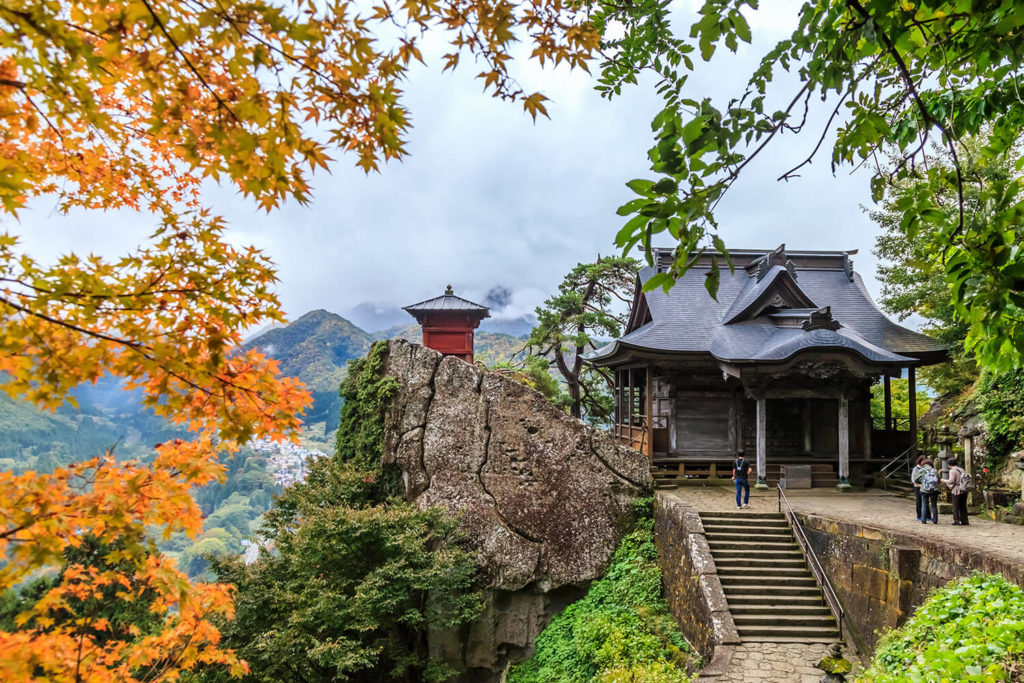
Around a twenty-minute train ride from Yamagata Station, the small town of Yamadera is a breath of fresh air away from the hustle and bustle of the cities. Most famous for the mountain temple of the same name, the small town also plays host to museums dedicated to Basho and western art respectively, as well as a few mom-and-pop restaurants and stores.
From Yamadera Station it is about a ten-minute walk to the Temple grounds where the climb begins. The stone path to the top of the temple has around a thousand steps, winding its way up the mountain through the lush cedar forest. Around the half way mark lies the memorial to Matsuo Basho, the site where he wrote his famous poem.
Once at the top of the mountain temple, the Godaido viewing platform will reward you with spectacular views of the surrounding valley and mountainside. Be sure not to miss the rest of the temple though, the paths and small temple areas set high into the mountain walls were amazing to behold.
After working up an appetite climbing up and down the mountain path, I suggest trying Imoni at one of the small shops in the area – Izumiya or the Endo main store. It’s a regional stew that actually has its own festival in Yamagata in mid-September where stew for 30,000 people is cooked in a large pot five metres in diameter!
Using your JR East Tohoku Area Pass, take the JR Senzan Line from either Yamagata Station or Sendai Station to Yamadera Station.
Best time of year to visit?
Spring, Summer, or Autumn. Although there is a spectacular view in Winter as well, the snow can make the climb a little dangerous.
Please check out the map that the lovely shop ladies of Yamadera drew and put together for tourists;
See more details>Here
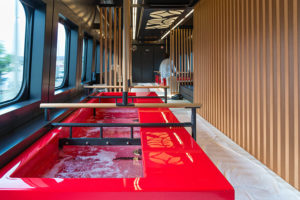
Why not arrive refreshed and relaxed, with the Toreiyu Tsubasa! The Joyful train designed to feel like stepping into a hot spring town featuring an onboard foot spa! It runs between Fukushima and Yamagata Stations and is available for online reservations with the JR East Tohoku Pass!
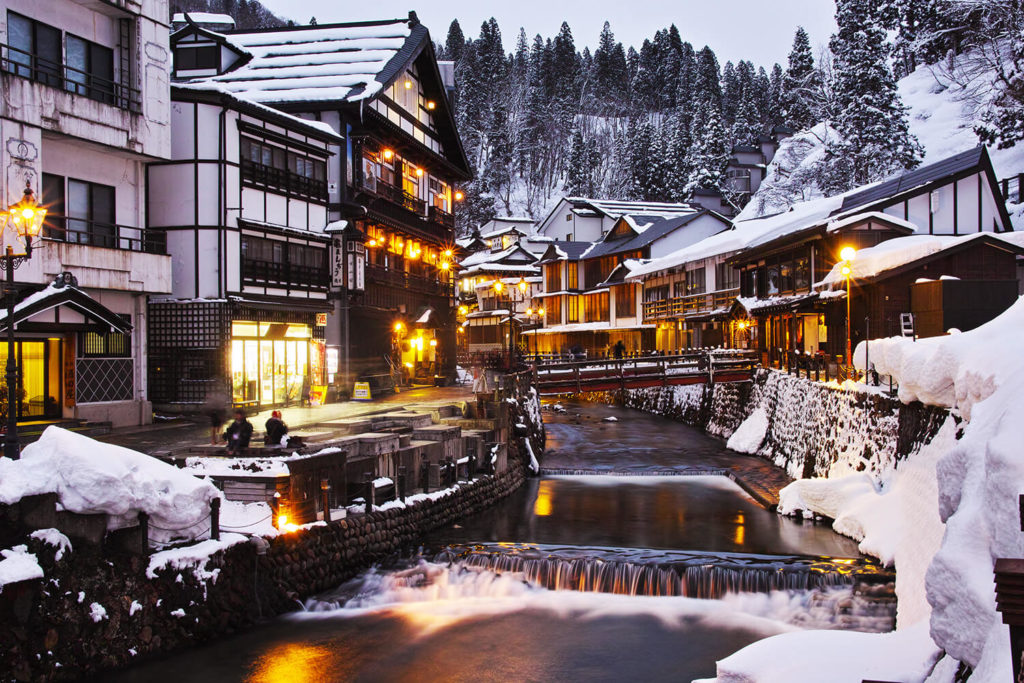
Take a step back in time by visiting the old hot spring town Ginzan Onsen! Said to be one of the inspirations for the Ghibli film Spirited Away, the main draw of the town is the beautiful streets lined with old wooden buildings and illuminated by gas lamps. A beautiful sight all year round, Ginzan Onsen is truly magnificent in winter.
Winter is also best for experiencing the hot springs the town is known for! Although there are a few public hot springs, I do recommend staying here for a night to experience the atmosphere of a Japanese Inn, including their hot springs and of course the scrumptious food!
If you’re not traveling in winter, there is a walking trail up to the old silver mine beyond the 22-meter waterfall at the back of the town. The trail leads up to the mine entrance, a section of which is open to exploring, however both the trail and mine entrance are only open from May 4th until the first snow.
Take the train from Yamagata Station to Oishida Station, covered by the JR East Tohoku Area Pass. Change at Oishida Station for a local bus to Ginzan Onsen, the local bus costs about 710JPY and operates around every 60-90 minutes.
Alternatively, during January and February, there is a bus that operates out of Tendo (a few stops away from Yamagata Station and also covered by the JR East Tohoku Area Pass) that will take you to Ginzan Onsen for about 4000JPY for a round trip.
Best time of year to visit?
Winter! Autumn is lovely as well, but the winter scenery here is the main draw.
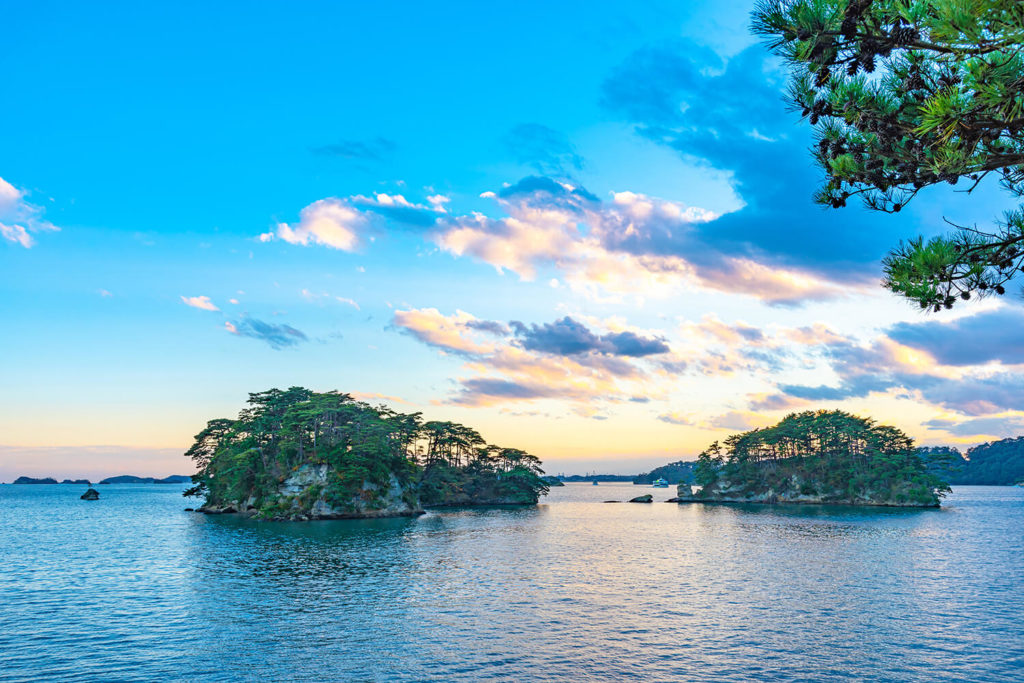
Considered one of the top three scenic views in Japan, Matsushima Bay is dotted with 260 pine-clad islands. Around a 40-minute trip from Sendai Station, accessible with the Japan Rail Pass, Matsushima makes for a lovely day trip, especially in Spring or Autumn!
Although the main reason to visit is the fantastic view of the islands, often seen by sightseeing cruise, the bay area has a few other places to explore on foot. A short walk from the station, the small island of Oshima is connected to the mainland by a short footbridge. Exploring this quiet island reveals a few small shrines, meditation caves, and viewpoints for the bay which are connected by trails.
Following the bay back towards the station, stop by Karantei – an old tea house originally part of the Fushimi Castle in Kyoto and gifted to Date Masamune, a ruler of Sendai at the time. Presently, you can enjoy a cup of green tea and some Japanese sweets while viewing the beautiful bay and the delightful tea rooms. The tea house does cost a small fee to enter however this also covers the cost into the small Matsushima Museum at the back of the grounds.
Take a stroll through the two temples built by the Date family hundreds of years ago, Entsuin Temple and Zuiganji Temple. Both temples feature beautiful grounds and buildings, with two gardens on the grounds of Entsuin, a Japanese style garden, and a western-style rose garden, while Zuiganji Temple is surrounded by shallow caves and towering cedar trees.
For a gorgeous nature walk, check out Fukuura Island - one of the larger islands connected to the mainland by a long red bridge. This natural botanical garden island has plenty of easy walking trails, which take about an hour to walk at a leisurely pace. It’s a great way to unwind and get a different perspective of the bay!
From Sendai Station, use your JR East Tohoku Area Pass and take the JR Senseki Line to Matsushima Kaigan Station. This is closer to the main sightseeing areas than Matsushima Station on the Tohoku Line.
Best time of year to visit?
Spring and Autumn!
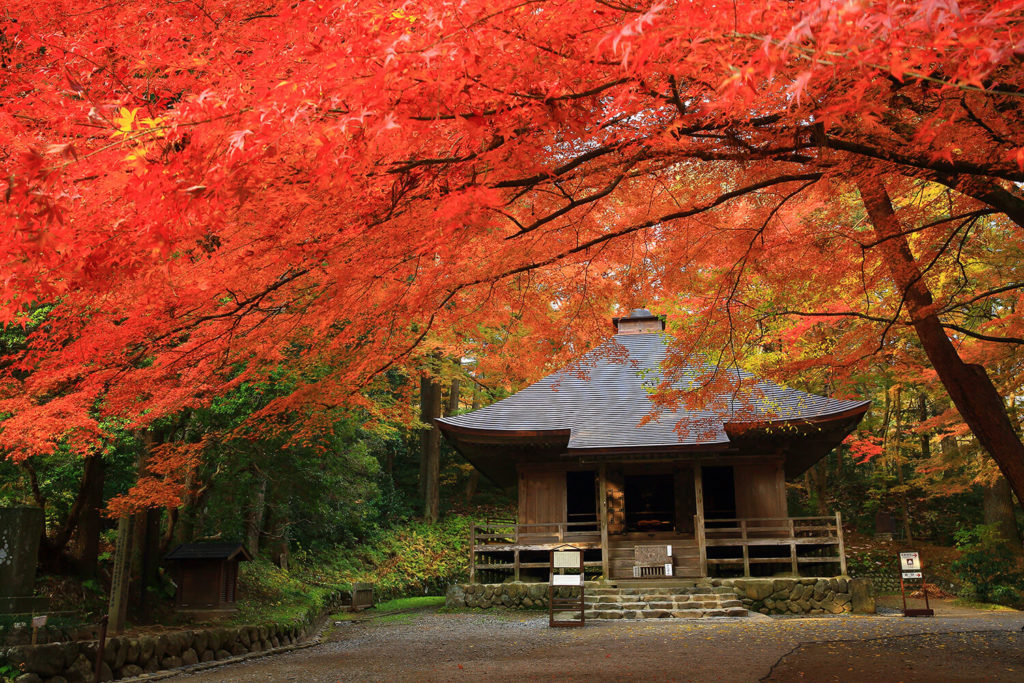
Located in the south of Iwate prefecture, Hiraizumi is an ancient city that once rivaled Kyoto with its beauty and elegance. Once the seat of the powerful Fujiwara clan, much of Hiraizumi was razed by Minamoto Yoritomo, the first shogun of the Kamakura shogunate. Despite so much destruction, Hiraizumi is definitely worth a visit to truly experience a city that contended with the old capital of Japan!
One of the more famous remnants of the ancient city, Chusonji was a temple for the Tendai sect of Buddhism established in 850. Although the temple suffered damage to many of its buildings, two of the original buildings that survived include Konjikido Hall, which is covered in gold similar to Kyoto’s Kinkakuji, and Kyozo Hall where the sutra, or Buddhist scripture, were kept. The grounds of Chusonji also hold a beautiful Noh theatre stage, which is used during the Autumn Fujiwara Festival during November.
Geibikei Gorge, not to be confused with Genbikei Gorge, is a short walk from Geibikei Station which is a little further away from Hiraizumi. This spectacular gorge is best appreciated by boat, which takes roughly 90 mins, with a 15-20 min walk at the turning point in the gorge. The boatman sings a local folk song while you float down the calm river surrounded by the striking scenery.
I would recommend taking a night to stay in Hiraizumi or close by, as the local trains here can run once or twice an hour – it can be hard if you miss a train to fit it all in one day!
From Tokyo take the Hayabusa Bullet train to Ichinoseki Station and change here for the JR Tohoku Line for Morioka to Hiraizumi Station.
For Hiraizumi to Geibikei, take the JR Tohoku Line for Ichinoseki to Ichinoseki Station and change here for the JR Ofunato Line for Kesennuma to Geibikei Station.
I would recommend getting a rental bicycle in Hiraizumi if able or catching the Hiraizumi “Run Run” Loop Bus.
Best time of year to visit?
Spring and Autumn! There is a lot of Wisteria around too, so May can be a good time to visit to see them in full bloom!
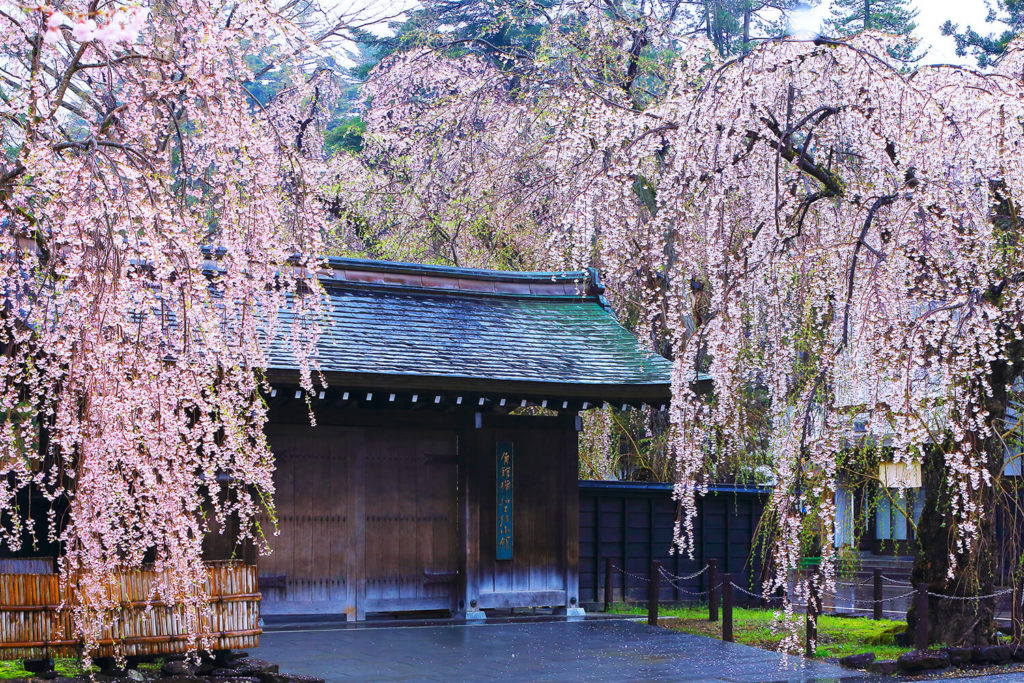
A former castle town and samurai stronghold, Kakunodate has been heralded at the little Kyoto of the North, and rightly so! The town features some of the best examples of samurai architecture in all of Japan.
Walking the samurai district is a stunning experience in Spring, as the streets here are lined with weeping Cherry Blossoms. Most of the samurai properties here are open to the public, although I would definitely recommend the Ishiguro House and the Aoyagi House if you’re on a time limit and not able to visit all of them! These complexes contain museum collections, restaurants, and gift shops. The displays provide information in both English and Japanese on the traditions, lifestyles and the historical context of the town. For anyone interested in samurai history I highly recommend giving these properties and the museums nearby a look!
A little further down the street from the samurai district is the merchant district which also holds some interesting buildings! Among these is the Ando Jozo Miso storehouse and shop, which is a Meiji Period brick storehouse that still sells miso and soya sauce in the same method it has been produced in for 150 years! Some miso or soya makes for a good souvenir, as well as a gift made locally from kabazaiku (cherry-bark woodwork)!
From Tokyo Station, catch the Komachi Bullet Train to Kakunodate Station.
Best time of year to visit?
Spring!
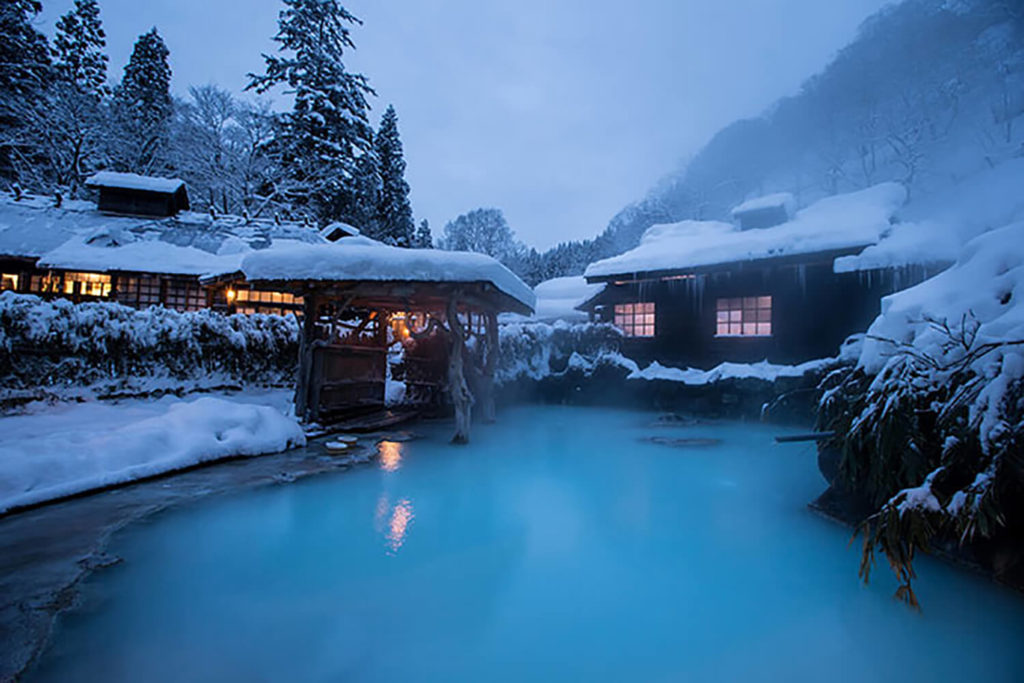
Deep in the mountains of the Akita prefecture, not too far from the samurai town of Kakunodate, Nyuto Onsen is actually a collection of seven different onsens all set in the same beautiful mountain area. It’s also an area less well known than other onsen towns, so a great place to go if you’re wanting to get away from busy bathhouses!
I highly recommend staying a night and getting the Yumegiri Pass (only available to those staying the night), which includes a one-day bus pass and admission to the seven onsens. Although it's more than possible to walk if you’re so inclined, I wouldn’t recommend it in the winter thanks to all the snow! The area feels so untouched by the modern era, it’s very easy to get lost in the beauty of the natural world all around you.
The Seven Onsen here all have their own different properties, said to help with a wide range of health problems. The most famous onsen here is Tsurunoyu, with opaque water and a thatched-roof terrace over the outdoor bath. It is also the oldest place in Nyuto Onsen, with roots dating back to the Edo Period, some even with a fireplace set into the floor of the room!
Using your JR East Tohoku Area Pass, take the Komachi Bullet Train from Tokyo Station to Tazawako Station.
From Tazawako Station, take the bus to Nyuto Onsen which takes around 50 mins and costs around 820 JPY.
Best time of year to visit?
Winter, if you’re wanting to get the full experience of the hot onsen water and the cold snowy conditions!
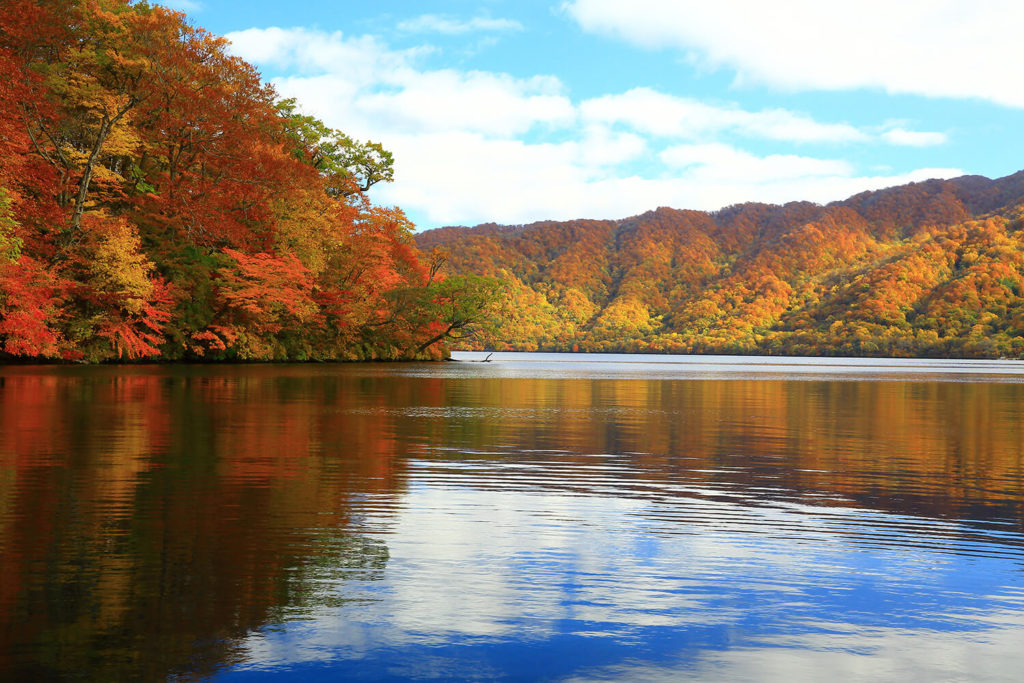
A beautiful blue lake surrounded by an untouched natural landscape, Lake Towada is the largest caldera lake on mainland Japan. Part of the Towada-Hachimantai National Park, the lake is on the border of Akita and Aomori prefectures and is most famous for its autumn colours and the Oirase stream.
The peaceful, undeveloped lake has a small town called Yasumiya, which in addition to a few attractions like the Towada Shrine, is one of the two areas the sightseeing cruise docks. These sightseeing cruises are the best way to really appreciate the beauty of the lake. There are two different cruises you can take, a round trip or a one way from Yasumiya to Nenokuchi or vice versa.
If you’re looking to do some hiking in this area I would recommend staying the night in town as it does take a bit of time to get to the lake and back out to Aomori city. The small township does start closing up quite early as well, especially in Autumn.
Another point of interest nearby, perhaps even more well known than the lake itself, is Oirase Stream. This stream is the only outlet for Lake Towada and luckily the bus route goes next to it so it’s quite easy to get the bus there. The rushing water covers the sound of nearby traffic, drawing you into an instagram-worthy world of your own.
Using your JR East Tohoku Area Pass, take the Hayabusa Bullet Train from Tokyo Station to Aomori Station. Change at Aomori station for the JR Bus bound for Lake Towada.
Best time of year to visit?
Autumn!
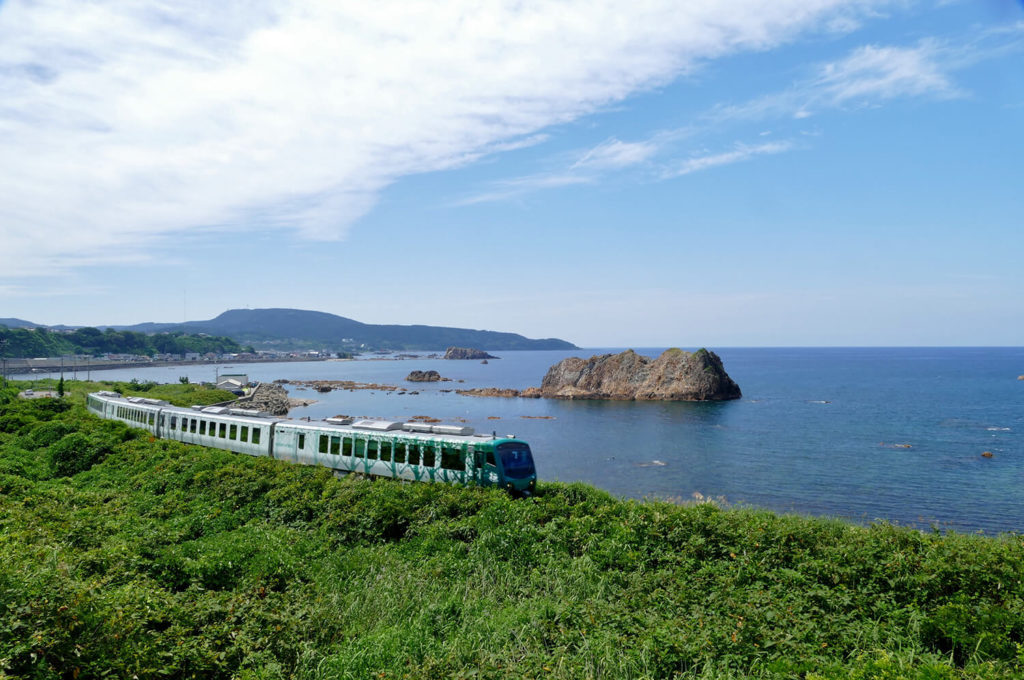
Take a leisurely journey along the North-West coast of Japan, experience one of the most picturesque train rides, and take a bath up close and personal with the ocean! The Joyful Train Resort Shirakami will present you with a stunning view of the coast as well as entertain you with performances on board!
Leaving from either Aomori or Akita, the Resort Shirakami can be booked online before you travel with the JR East Tohoku Area Pass! The journey takes around 5 hours from start to finish, although we’ll be stopping partway to get to the ocean baths of Fukaura. The train will slow down when approaching particularly scenic locations so that you have time to snap photos from the larger panoramic style windows. Along the way there are performances from local artists, depending on the day and service, most popular are the musicians who play Shamisen and sing traditional Japanese folk songs!
Disembark at the JR Wespa Tsubakiyama Station and board the free shuttle bus to Koganezaki Furofushi Onsen-Hotel. This has the most amazing outdoor bath set on the peninsula protruding into the Sea of Japan, it really feels like you’re a part of the beach! I recommend staying the night at the hotel here as the outdoor bath closes for day-trip customers at 4 pm and the best part of this outdoor bath is experiencing the sunset over the ocean horizon.
After all this relaxation, why not stretch your legs a little and explore the hiking trails around the Juniko, a series of small lakes and ponds in the UNESCO World Heritage Site, Shirakami-Sanchi. This extensive mountain range stretches over the border of Akita and Aomori prefectures. Among the lakes of Juniko is Aoike, famous for its unnaturally blue water which creates an enchanting atmosphere amidst the verdant forest.
Using your JR East Tohoku Area Pass, from Aomori or Akita Stations, take the Resort Shirakami to the Wespa Tsubakiyama Station.
Best time of year to visit?
Summer, Spring, Autumn.
With a wide range of experiences to explore, the Tohoku region is ideal for getting away from the hustle and bustle of Japan’s big cities! I hope that these places have inspired you to visit and fall in love with Tohoku as I have. Why not give us a call and we can put together the best itinerary for you!